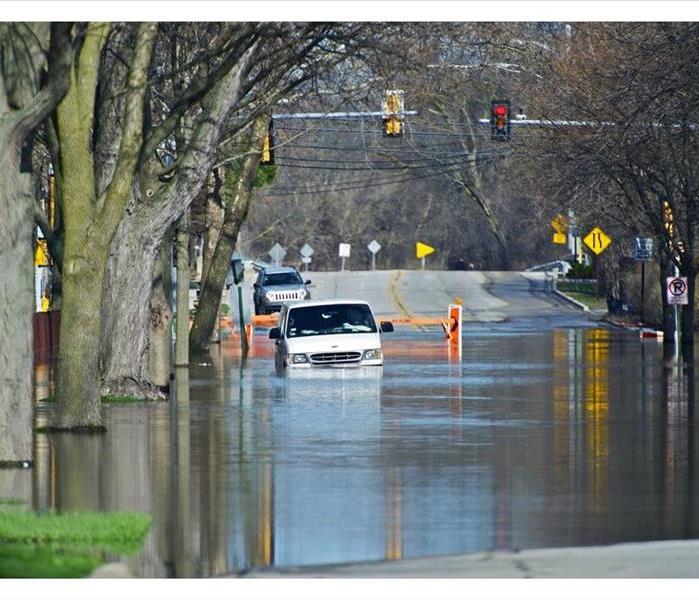Driving Tips for Flooded Streets
7/20/2022 (Permalink)
Because of the risks involved, drivers should avoid driving on a flooded street whenever possible. However, the weather can change quickly. It is important to know what to do if you unexpectedly must deal with a flood while driving your car.
Dealing With Flooded Roads
There are multiple reasons why you should not drive through water:
- Water may hide debris, dips or washed-out roads
- Six inches of water can immobilize most cars
- Hydroplaning, hidden debris and downed powerlines make roads dangerous
- Your car could float off the road
Tips for Driving on Flooded Streets
If you can't avoid driving on a flooded street, these travel tips can help keep you safe:
- Stay in the Center
The water is usually the shallowest in the center of the road. Unless there is another car on the road, don't worry about staying in your lane. Stick to the center of the road.
- Only Cross Very Shallow Water
As little as a half-inch of water can cause you to lose control of your vehicle. If the water is above the center of your wheels, do not attempt to drive through it.
- Keep Your Car in Low Gear
To protect your car, stay in first or second gear. Drive with your foot on the gas and use the brake to regulate your speed. If you are driving a car with an automatic transmission, keep your speed low enough to stay in first or second gear.
- Drive Single File
Passing other vehicles is a safety risk. Stay in a single line behind other cars. The other cars will move water out of the way which can help you maintain traction.
- Drive Slowly
If you must drive through water, enter it at one to two miles per hour and exit at three to four miles per hour. This will help avoid flooding your engine.
- Dry Your Brakes
Once you are out of the water, brake lightly while driving very slowly. This will dry your brakes and help you avoid spinning out.
- Do Not Drive Through Moving Water
Less than a foot of water can float most vehicles and two feet can wash even a heavy pickup away. If you do drive into moving water and your wheels lose traction, open your car door to let water in. This will add weight to your vehicle and may bring it back in contact with the road.
- If Your Engine Floods, Abandon Your Vehicle
Restarting your car after the engine floods can do severe damage to your engine. Leave your vehicle and move to higher ground. If you are trying to rush home to save your possessions, don't risk it. A flood restoration service in Saint Paul, MN, can help you restore your home. It isn't worth risking your life or your vehicle to try to save your stuff.
- Do Not Drive Around Barricades
Barricades are there for a reason. There may be power lines down, debris or the road may be washed away.
If you encounter a flooded street, your best option is to take another route. If you must drive through standing water, follow these tips to keep yourself safe.

 24/7 Emergency Service
24/7 Emergency Service
